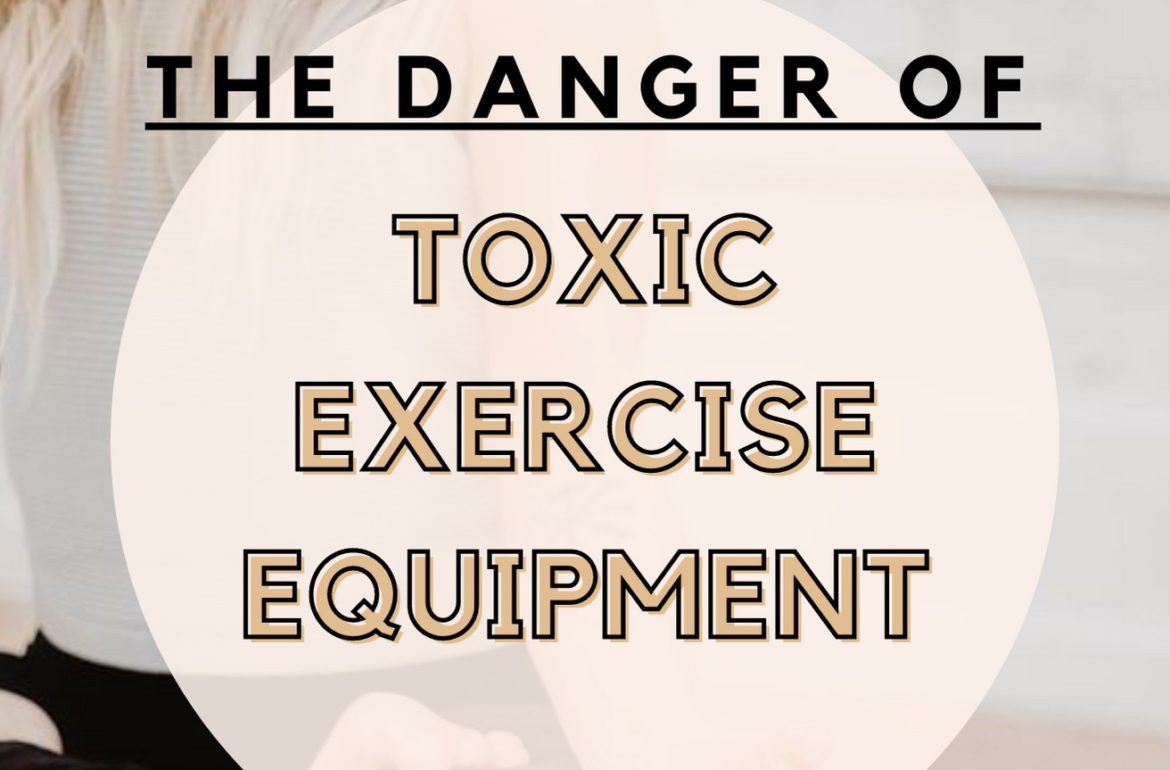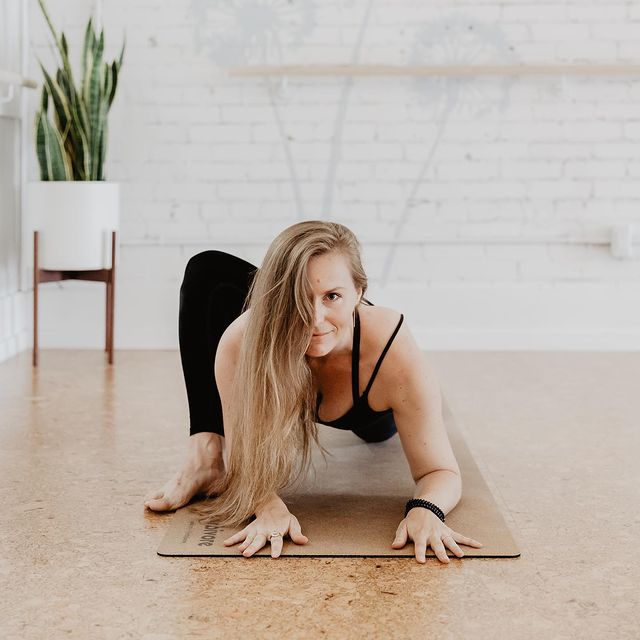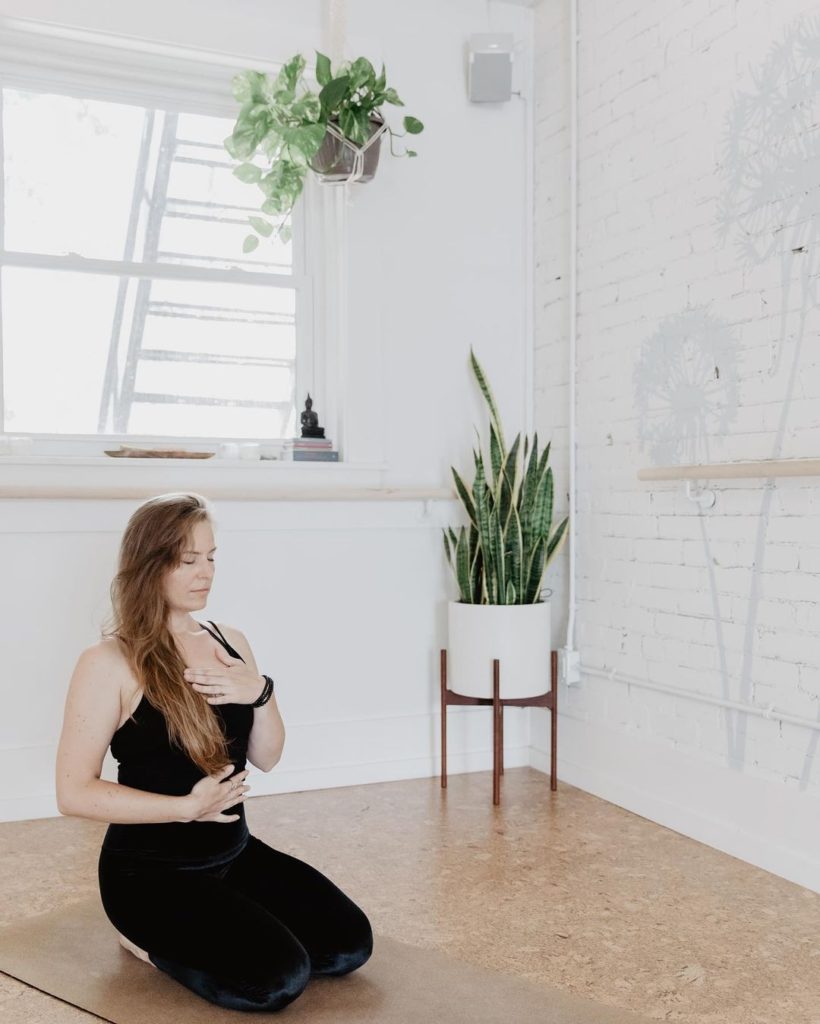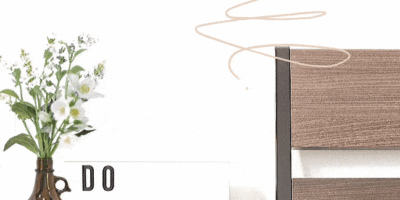
Fitness accessories, like yoga mats, have become a regular part of our lives these days.
You may already know that yoga mats are one of the most loved and widely-used fitness companions. Whether you practice yoga at home, use it for weight training (to protect your wooden floors, yikes), or just enjoy a good stretch, our yoga mats have seen some of our greatest accomplishments and our sweatiest struggles.
Most of us use our yoga mats every day and they have become indispensable to our everyday routine. For us personally, it is not only a part of our morning ritual which sets the tone for how we start the day, but also as a part of our daily stretching and nightly routines. You can bet we plan to use our cork yoga mat for many, many years… So, it is essential to make a wise investment in not only the best but the healthiest option when we choose your yoga mat.
Several studies have shown that not all yoga mats are healthy, in fact, many of them are straight up toxic. Some of you might be thinking well it can’t be that bad if they are still marketing them to us, heck, even my yoga instructor uses a conventional rubber mat! NUH UH, honey, you know better!..Or keep reading and you will!
PVC, the most widely used material in almost all conventional yoga mats you see on the market, is a known human carcinogen – a proven cancer-causing agent when exposed through inhalation and skin contact.
This and several other toxins in them, (like PAHs and VOCs) are owing to cheap materials used in cheap manufacturing processes. With the market for yoga mats set to reach USD 15.2 billion by 2026, it is natural that companies are keen to invest in yoga and exercise mats to take their business forward. But, not all of them have the best intentions…
In this post, we are going to highlight the risks of using such yoga mats and also give you suggestions on healthy, more natural alternatives. Scroll on!
So, we’ve established that most conventional yoga mats are toxic
Yes, the mats that we use for exercising or practicing yoga can be causing harm to yourself, your little ones, or your dearest fur friend. We mentioned PAHs and VOCs, – Volatile Oil Compounds and Polycyclic Aromatic Hydrocarbons can be found not only in yoga mats but also in our carpets, furniture, dishware, and other household items.
Now, you probably can’t just go and throw out your couch right now, or repaint your whole house to avoid inhalation from harmful VOCs… even though you should. I say this because a few harmful chemicals here and there… It’s inevitable… but the cumulative exposure and effect is what we are concerned with. That’s how making small changes, like upgrading our yoga mat, can begin to make a difference. So, let’s really dig in, how at risk am I? and what could possibly be in my mat that’s so harmful?
Avoid PVC yoga mats at all costs
Polyvinyl chloride (PVC) is one of the top 3 largest selling thermoplastics worldwide, with more than 40 million tonnes being produced annually. We can guarantee that if you look down and what you’re standing on is not a natural surface, like cork or cotton, then it’s almost certainly made of PVC.
In order to share all the harmful toxins found in PVC yoga mats we are going to cite our favorite reference and our most trusted source; Irina Webb, THE non-toxic consumer product researcher, from her article: “PVC Yoga Mats: Are They Safe or Toxic?”. The thoroughness of her research will blow you away. Let’s face it, she already did all the hard work for us and WAY better than we could too.
The first 3 harmful compounds are heat stabilizers in PVC
“First, the organotin compounds in PVC. All three had a negative impact on human cells. DBT and TBT revealed the most toxic effects even at low concentrations.
Second, antimony in PVC may cause cancer, harm breastfed children, and damage organs through prolonged or repeated exposure.
Third, organochlorines are synthetic pollutants to humans”.
Heavy metals like lead and cadmium are also in PVC yoga mats.
“Lead can cause neurological, cardiovascular, renal, gastrointestinal, hematological, and reproductive effects (source). And cadmium is linked to reduced mineral density in bones, preterm labor, kidney disease and damage (source)”.
…And then there are Phthalates. Now, what are these?
These are similar to dioxins but tend to pose a greater danger to our health. Phthalates are endocrine disruptors that can overturn the body’s hormonal system. “In 2012 the US government enacted a law to restrict their use in children’s toys and other children’s items (source). In addition, they have been linked to birth defects, asthma, neurodevelopmental problems in newborns, fertility issues, obesity, and cancer (source)”.
Phthalates are especially harmful to pregnant women
Phthalates can be the cause of reduced fertility in women, among other things. These chemicals can also cause premature deliveries and lower body weight of babies. If exposed to larger quantities, the unborn may even have developmental disorders.
Hence, if you are planning to get pregnant, it is all the more important for you to invest in a safe and healthy yoga mat that will not endanger the development of your future children. While some argue that these compounds are already present in the environment and that we are already exposed to them, does that mean we should not be a little skeptical while choosing a product that we plan to use regularly?
Unfortunately, it doesn’t end there, PVC is NOT recyclable and especially dangerous to us when left in landfills.
“Because PVC is not biodegradable, the only way to get rid of it is to burn it. When burning, chlorine produces dioxins that end up in soil, fish, animals, water, air, and, ultimately, in humans. Dioxins are persistent (they do not break down easily in the environment) and bioaccumulative (they build up in our bodies).
As a result, they may cause reproductive and developmental problems, damage the immune system, and interfere with hormones. I think those are good reasons to avoid PVC yoga mats. Clearly, we cannot get rid of all plastics, but let us do what we can by making informed decisions”.
So, what’s a safe, non-toxic yoga mat?
What to avoid: Many of the incredibly affordable and widely available yoga or exercise mats that you see in stores and marketed by your favorite big box brands. Why risk it when there are other, less harmful materials that you can choose to buy?
Our first choice is cork yoga mats, of course!
These non-toxic yoga mats are gradually giving way to a greener and safer future for us all.
Cork is an eco-friendly material that has become very popular, and for good reason!
From sports equipment, surfboards to exercise mats, cork is now being used everywhere. We were one of the first companies 6 years ago now to pioneer the cork yoga movement and manufacture a non-toxic yoga mat alternative for ourselves and other beings to enjoy with peace of mind. Here are just a few things we love about cork before we share some other noteworthy options.
Cork yoga mats are always fresh
Unlike PVC yoga mats, cork mats feel fresh throughout their life cycle. They do not exude unpleasant odor and are also naturally antimicrobial. It means that they prevent the growth of bacteria and fungus without using harsh chemicals. You can say that the cork mats are way more hygienic and safe, especially for yoga practice, which is all about cleansing the mind, body, and soul.
A Versatile Companion
Cork yoga mats are super low maintenance, to begin with. As a result, they are quite an economical option for busy yoga enthusiasts. Exercise is all about comfort, and cork mats provide exactly that with their honeycomb cellular structure providing the right amount of stability and support. These are yoga mats with high resilience and density that make exercising way more hassle-free than their PVC counterparts.
A Non-Slip Grip You Can Trust
While practicing yoga, your mat needs to encourage better gripping, and cork yoga mats provide that naturally. When moist, the mats offer a better grip, as the natural waxy substance in cork called suberin becomes activated and even prevents moisture absorption to a great extent. If you are into hot yoga, well, you’re in the right place and can forget about bringing a towel to class to lay over your mat.
Last but not least
Cork yoga mats are incredibly durable and can last up to 6+ years without posing any health hazard.
Other options we love are The Ritual Rug by MA Wovens, and the Rose Quartz Herbal Mat by Oko Living. Both of these yoga mat alternatives were rigorously reviewed by our friends over at Mache in a series of tests with multiple evaluation criteria including the mat’s ingredients, or materials, the supply chain and manufacturing processes, and the company’s shipping practices.
Finally, we can all breathe a breath of fresh air
As we all practice yoga for improving our overall sense of wellbeing and exercise for a healthy life it is necessary to buy a yoga mat that aligns with our intentions. If you are interested in jumping on the cork bandwagon, get in touch with us. We have the perfect solution for you.
Namaste, xx
Your sisters,
Emily & Rebekah





